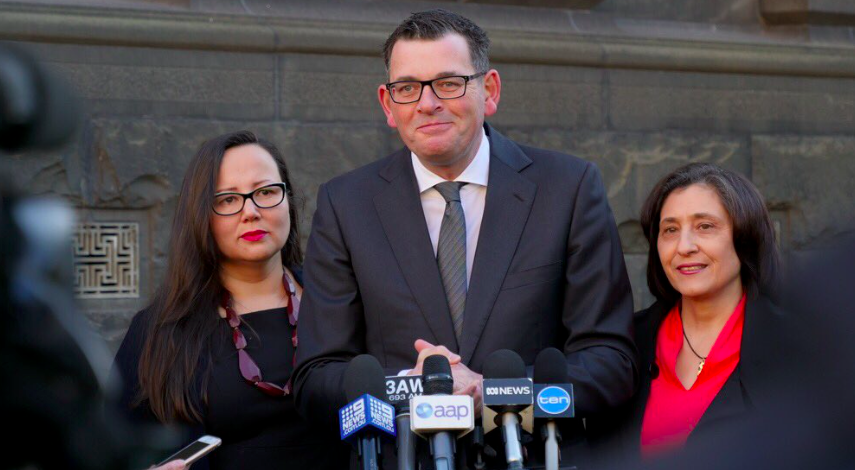In the run-up to the November 24 election, the Victorian Labor government has pledged to boost the state’s renewable energy target to 50% by 2030, noting that this will create thousands of jobs, put more energy into the grid, increase investment and drive down energy prices.
The Labor government has already legislated renewable energy targets of 25% by 2020 and 40% by 2025 – all of which will be scrapped if the Coalition wins in the upcoming election.
The economic perks of such ambitious renewable energy targets are numerous. The government calculates these targets will help deliver around $9 billion of investment and create more than 11,000 jobs over the life of the scheme.
“Labor’s VRET has helped create a jobs boom and boosting it further will see even more jobs created across our state,” Minister for Energy, Environment and Climate Change Lily D’Ambrosio said.
In addition, the Victoria Renewable Energy Target (VRET) will put more energy into the grid, delivering up to 5,400MW of new, large scale renewable energy capacity by 2025.
Scrapping the VRET would, on the other hand, result not only in thousands of job losses and billions of dollars of investment that will never reach Victoria, but also in higher energy prices.
“The last Liberal Government smashed our renewable energy sector and the Liberals are promising to do it again by axing VRET if they’re given the chance,“ D’Ambrosio said.
The VRET has already been enormously fruitful.
“In four short years, 732MW of new renewable energy capacity has been built, and more than 3,000MW of renewable capacity is under construction or contracted to be built,“ Labor said in statement on Thursday.
Moreover, Victoria held its first renewable energy auction under the VRET earlier this year, which exceeded expectations delivering 928 MW of renewable capacity.
As a result, six projects – three wind and three solar – will be developed across the state, producing enough electricity to power 646,273 households – the equivalent of powering the towns of Ballarat, Bendigo, and Geelong combined.
The power produced by these projects is also expected to drive a 16% reduction in Victoria’s electricity sector greenhouse gas emissions by 2034/35, the government calculates.
Boosting the VRET builds on the Government’s work to cut power bills for Victorians, from the $50 Power Saving Bonus, to subsidising solar panels and installing batteries or hot water systems on 720,000 houses across the state through the Solar Homes program.
The 50% VRET announcement triggered a flurry of positive reactions from the renewable energy industry.
Clean Energy Council Chief Executive Kane Thornton said delivering 50% renewable energy by 2030 is achievable and can be delivered at a lower cost than any other comparable option to modernise Victoria’s electricity sector.
“While the industry continues to wait for certainty at the federal level, extending the VRET to 2030 provides the certainty that renewable energy companies need to invest in new wind, solar and storage projects across the state,” he said.
Earlier today, another good news came from the Victorian Labor government as it unveiled a solar renter scheme. The program is set to provide $82 million in rebates over 10 years, targeting an initial 50,000 homes.
This content is protected by copyright and may not be reused. If you want to cooperate with us and would like to reuse some of our content, please contact: editors@pv-magazine.com.




1 comment
By submitting this form you agree to pv magazine using your data for the purposes of publishing your comment.
Your personal data will only be disclosed or otherwise transmitted to third parties for the purposes of spam filtering or if this is necessary for technical maintenance of the website. Any other transfer to third parties will not take place unless this is justified on the basis of applicable data protection regulations or if pv magazine is legally obliged to do so.
You may revoke this consent at any time with effect for the future, in which case your personal data will be deleted immediately. Otherwise, your data will be deleted if pv magazine has processed your request or the purpose of data storage is fulfilled.
Further information on data privacy can be found in our Data Protection Policy.